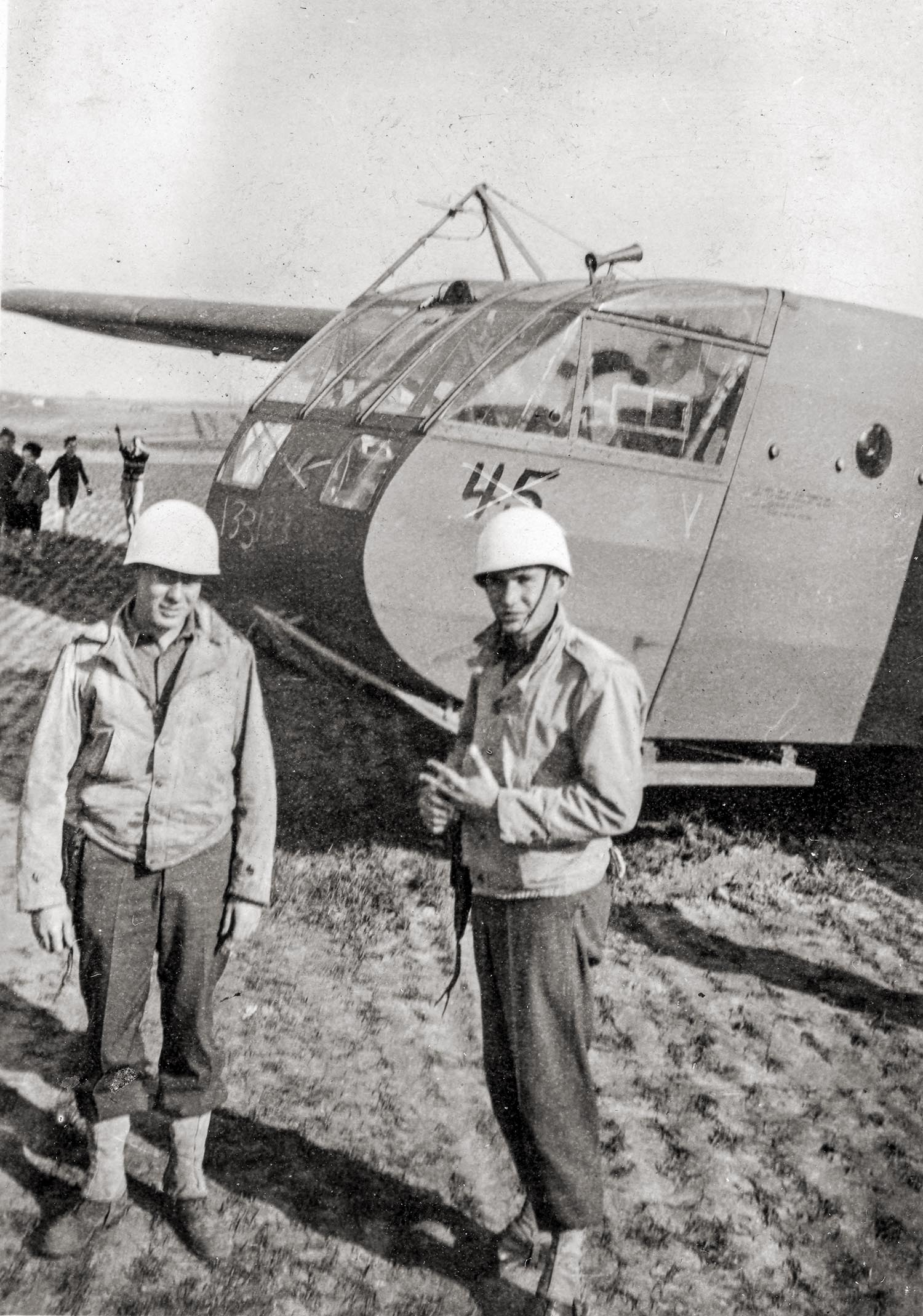
This is a found photo. Written on back: "March 1945. Dexter Nunley, T5 and myself on guard at a disabled glider that put down near our camp at Lasne-Chapelle - Saint Lambert, Belgium. No one injured."
Allied combat gliders were towed behind modified bombers or transport aircraft and used in some of the riskiest missions of World War II.
Lasne-Chapelle-Saint-Lambert in Province du Brabant Wallon (Wallonia) is a city located in Belgium about 13 miles south-east of Brussels, the country's capital. General Courtney Hodges' U.S. First Army liberated the region south of Brussels and Maastricht in early September 1944. On February 4, 1945, the country was reported to be free of German troops. Following liberation Belgian towns were widely targeted by unpiloted German V-Bombs, particularity centered on the Port of Antwerp. German crews fired more than 4,000 V-1s and more than 1,700 V-2s at greater Antwerp. Lasne-Chapelle-Saint-Lambert is located approximately 57 miles south of Antwerp. | Click image for Comments. | Home | Browse All Photos